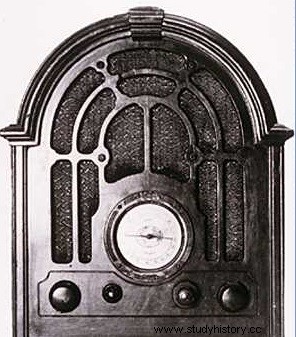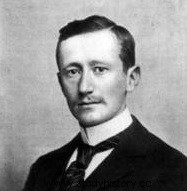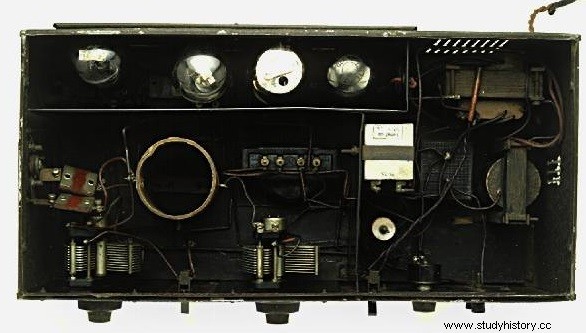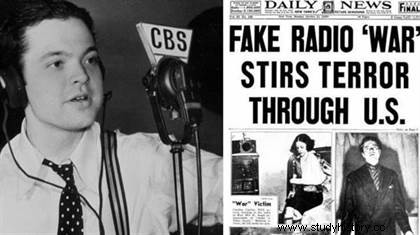 The Invention of Radio is the result of a collective work, which starts from the discovery of electromagnetic waves, from the invention of telegraphy wireless, and led to the first materials that could be used to communicate by radio waves. Italian physicist Guglielmo Marconi is considered the father of wireless transmission or TSF, although his inventions were inspired by the discoveries of many predecessors (Hertz, Popov, Branly and Lodge). This technology will quickly bring culture, information and entertainment within everyone's reach. Giving rhythm to the day, a new way of life is being invented.
The Invention of Radio is the result of a collective work, which starts from the discovery of electromagnetic waves, from the invention of telegraphy wireless, and led to the first materials that could be used to communicate by radio waves. Italian physicist Guglielmo Marconi is considered the father of wireless transmission or TSF, although his inventions were inspired by the discoveries of many predecessors (Hertz, Popov, Branly and Lodge). This technology will quickly bring culture, information and entertainment within everyone's reach. Giving rhythm to the day, a new way of life is being invented.
A little history of the radio
When wired telegraphy conquered the world from the second half of the 19th century thanks to the laying of submarine cables, Guglielmo Marconi's research came to destabilize this first globalization of telecommunications by inaugurating the possibility of transmitting information through hertzian waves. Leaving for England to make his invention a reality, he perfected it by using a transmitter and a receiver tuned to a particular wavelength by varying the electrical characteristics of the antennas and circuits. In December 1901, the first transatlantic radio signal was received on the island of Newfoundland. Other later innovations made it possible to amplify electronic signals and broadcast radio transmissions over long distances.
 The successful transmission experiments carried out by the Italian during the 1890s synthesize several earlier breakthroughs that once came from more to show that the inventor does not succeed alone. Let us cite, without wishing to be exhaustive, the work of the Scotsman James Clerk Maxwell, the German Heinrich Hertz on the waves that bear his name, the Frenchman Edouard Branly or the Russian Aleksandr Stepanovitch Popov. In turn, Marconi's success spawned a series of innovations, including the American Lee De Forest's triode, which from 1907 made it possible to amplify an electronic signal and increase the range of communications.
The successful transmission experiments carried out by the Italian during the 1890s synthesize several earlier breakthroughs that once came from more to show that the inventor does not succeed alone. Let us cite, without wishing to be exhaustive, the work of the Scotsman James Clerk Maxwell, the German Heinrich Hertz on the waves that bear his name, the Frenchman Edouard Branly or the Russian Aleksandr Stepanovitch Popov. In turn, Marconi's success spawned a series of innovations, including the American Lee De Forest's triode, which from 1907 made it possible to amplify an electronic signal and increase the range of communications.
This new ability to communicate wirelessly to the leg quickly found applications in the maritime field, where transmissions were made compulsory in 1914 after the sinking of the Titanic in 1912. During the First World War, large-scale military applications show the operational interest that instantaneous communication has for a modern army. After the war, the reconversion of military resources paved the way for commercial exploitation of radio, which would begin to enter homes.
Listeners for a home show
It was after the cataclysm of the Great War that radiocommunications were transformed into broadcasting and the waves entered homes to become everyday technology. A few pioneers, initiated into military communications, are already tinkering with sets in their spare time. It was not until the 1920s that the first stations appeared in the United States and Europe.
 In Pennsylvania, the Westinghouse Electric 8c Manufacturing Company established KDKA on November 2, 1920. Remembered as the first commercial station in history, it broadcasts one hour every evening to support the sales of receivers. In France, it is also the issue of the end of the war and the conversion of military resources that explains the appearance of a civilian radio offer. On December 24, 1921, the Eiffel Tower station broadcast for the first time. The listener appears, the wireless amateur becomes marginalized; eternal victory of massification and the general public over the rare enthusiasts of the first days.
In Pennsylvania, the Westinghouse Electric 8c Manufacturing Company established KDKA on November 2, 1920. Remembered as the first commercial station in history, it broadcasts one hour every evening to support the sales of receivers. In France, it is also the issue of the end of the war and the conversion of military resources that explains the appearance of a civilian radio offer. On December 24, 1921, the Eiffel Tower station broadcast for the first time. The listener appears, the wireless amateur becomes marginalized; eternal victory of massification and the general public over the rare enthusiasts of the first days.
With the structuring of an offer more suited to the general public who did not want to "tinker" with their set, but simply listen to what they received, the 1930s saw the beginning of put in place a range of programs that is growing and stabilizing. Music, sports broadcasts and soap operas make their appearance. The latter, sponsored in the United States by brands in search of notoriety where cleaning product merchants carve out the lion's share, create a listening habit that gives the listener the feeling of having an appointment. with its program, to have become a faithful of the adventures of Amos and Andy or, in France, of the Duraton family, a soap opera broadcast on Radio Cité from 1937.
In the United States, radio had its heyday in 1938 with the famous radio hoax by Orson Welles, which set America in turmoil. With the transistor and frequency modulation (FM), the success of radio became planetary. Despite the arrival of digital, radio remains popular, particularly in France, where it is a privileged source of information.
Bibliography
- Summary of the history of radio and television by Robert Prot. The Harmattan, 2007.
- History of radio and television, by Pierre Albert. PUF, 1996.
To go further
- The website of the National Audiovisual Institute.

